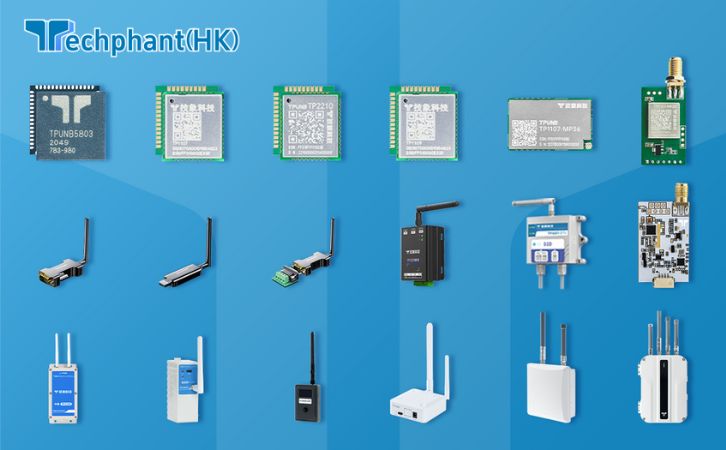I. Introduction to WAPS
The Wide Area Positioning System (WAPS) is a cutting-edge terrestrial-based positioning technology designed to deliver precise location data in environments where satellite-based systems like the Global Positioning System (GPS) often falter. Unlike GPS, which depends on satellite signals that can be obstructed by buildings, dense foliage, or indoor settings, WAPS employs a network of synchronized ground-based transmitters, or beacons, to broadcast robust radio signals. This makes WAPS an ideal solution for urban areas, industrial complexes, and indoor facilities where reliable positioning is critical. Developed to complement or serve as an alternative to GPS, WAPS addresses the shortcomings of traditional positioning technologies, such as signal failure, interference, and large-scale positioning errors, which are common in technologies like Bluetooth or Ultra-Wideband (UWB). By providing centimeter-level accuracy and eliminating the need for complex infrastructure setups, WAPS is transforming spatial management across industries, enhancing safety, efficiency, and operational intelligence. Its applications span smart mining, power and energy, manufacturing, engineering construction, and smart government services, making it a cornerstone for intelligent and refined location-based solutions.
II. How WAPS Works
WAPS operates through a sophisticated network of ground-based transmitters that emit radio signals to WAPS-enabled devices, such as wearable terminals or smartphones. These transmitters are strategically deployed to ensure wide-area coverage and are synchronized to maintain precise timing, which is essential for accurate positioning. The system uses time-of-arrival (TOA) measurements, where a receiver calculates the travel time of signals from multiple transmitters to its location. By employing trilateration—a process that uses the distances from at least three transmitters—WAPS determines the receiver’s position with centimeter-level precision, even in challenging environments like indoor facilities or densely built urban areas. When a user wearing a positioning terminal enters an area, beacons interact with the terminal via Bluetooth or UWB to collect real-time location data. This data is then transmitted to a gateway, which forwards it to a server and application platform for processing. Unlike GPS, WAPS signals penetrate walls and other obstacles effectively, ensuring consistent performance. The system’s design eliminates the need for extensive wiring or complex construction, reducing deployment costs while maintaining high reliability. Additionally, WAPS supports advanced features like electronic fence alarms and trajectory management, making it a versatile tool for real-time and historical location tracking.
III. Applications of WAPS
WAPS has a broad range of applications, addressing critical needs in industries where precise positioning is essential for safety, efficiency, and operational success. In emergency services, WAPS enables first responders to locate individuals within buildings or urban environments where GPS signals are unreliable, significantly improving response times and saving lives. In logistics and supply chain management, WAPS powers asset tracking in warehouses, factories, and transit hubs, ensuring real-time visibility of goods and equipment. Indoor navigation is a key use case, with WAPS facilitating wayfinding in complex facilities like airports, hospitals, shopping malls, and industrial plants, guiding users to precise locations with ease. The system also supports intelligent electronic fence alarms, instantly alerting managers when unauthorized personnel enter hazardous areas, which is critical for safety in industries like mining, energy, and construction. WAPS’s trajectory management capabilities allow for accurate playback of personnel movement histories, aiding in workflow optimization, incident tracing, and behavior analysis. Beyond these, WAPS provides positioning and map engine functions, supporting multi-source data integration, spatial analysis, and real-time risk management. Its software solutions enable features like “single-map” risk control, individual autonomous positioning, and safety early warnings, making it invaluable in smart mining, power utilities, manufacturing, engineering, and smart government services. By addressing the limitations of Bluetooth and UWB, such as interference and positioning errors, WAPS delivers a robust solution for intelligent spatial management.
IV. Advantages and Limitations
WAPS offers numerous advantages that make it a superior choice for precise positioning in challenging environments. Its centimeter-level accuracy surpasses that of GPS, Bluetooth, and UWB in indoor and urban settings, providing reliable location data where other systems fail. The terrestrial infrastructure ensures strong signal penetration through obstacles like walls, making WAPS ideal for indoor applications. By avoiding reliance on satellites, WAPS is immune to issues like satellite outages or jamming, enhancing its reliability for critical applications. The system’s design eliminates the need for complex wiring or extensive infrastructure, reducing deployment and maintenance costs. Features like electronic fence alarms, trajectory management, and real-time risk control further enhance its utility, enabling proactive safety measures and operational efficiency. WAPS also supports diverse development needs through its positioning and map engines, offering tools for device management, spatial analysis, and integrated rendering, which are crucial for industries requiring customized solutions.
However, WAPS has some limitations. Its coverage is restricted to areas with deployed transmitters, unlike GPS, which provides global reach. Establishing a network of beacons can be costly and time-consuming, particularly in large or remote regions, limiting scalability compared to satellite-based systems. Signal interference from other radio sources or physical obstructions, while less frequent than with GPS or Bluetooth, can still affect performance in certain conditions. Additionally, WAPS requires specialized receivers or terminals, which may increase adoption costs for organizations transitioning from other technologies. When compared to GPS, WAPS excels in localized, high-precision scenarios but is less suited for applications requiring global navigation, such as aviation or maritime tracking. Despite these challenges, ongoing advancements in WAPS technology are expanding its coverage and reducing costs, positioning it as a leading solution for intelligent spatial management.
V. Conclusion
The Wide Area Positioning System (WAPS) represents a transformative leap in location-based technology, offering a reliable and precise alternative to traditional systems like GPS, Bluetooth, and UWB. By leveraging a terrestrial network of synchronized transmitters, WAPS delivers centimeter-level accuracy in environments where satellite signals falter, such as indoor facilities and dense urban areas. Its ability to support critical applications—from emergency response and asset tracking to indoor navigation and intelligent safety management—makes it an indispensable tool across industries like smart mining, energy, manufacturing, and government services. While challenges like limited coverage and infrastructure costs remain, the system’s advantages, including robust signal penetration, low deployment complexity, and advanced features like electronic fences and trajectory analysis, position WAPS as a game-changer in spatial management. As technology continues to evolve, WAPS is poised to drive smarter, safer, and more efficient operations, reshaping how industries perceive and manage space in an increasingly connected world.


